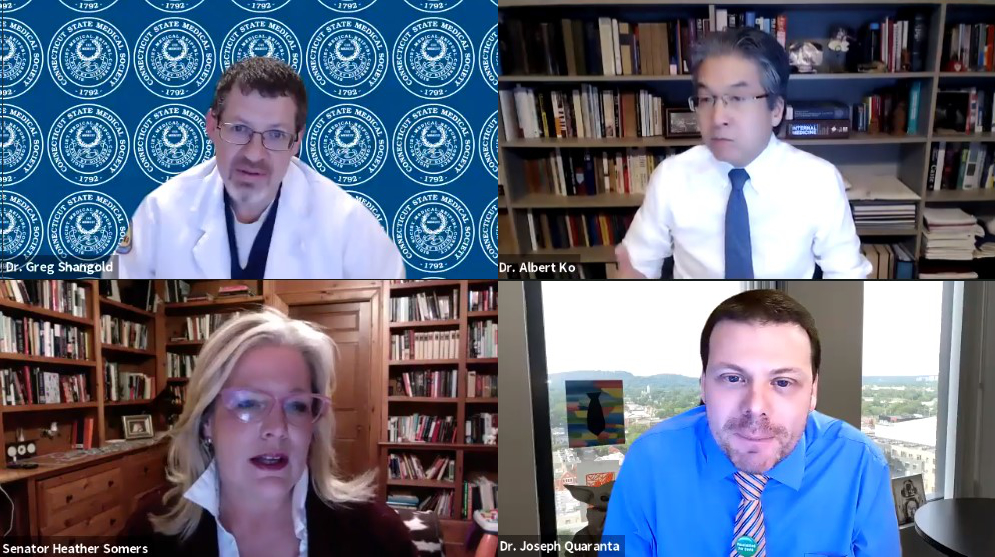As Connecticut’s COVID vaccine rollout continues, educators—who are eager for the safer in-person learning that a vaccine could afford—joined a candid conversation with state leaders and health experts about what to expect and when.
The 90-minute webinar, Connecticut Vax Facts, was hosted by CEA and AFT Connecticut. Featured panelists were
- Dr. Albert Ko, Professor of Epidemiology and Medicine and Department Chair at the Yale School of Public Health
- Dr. Greg Shangold, Connecticut State Medical Society President
- Dr. Joseph Quaranta, President of the Community Medical Group and Co-Chair of the Connecticut Health Information Technology Advisory Council
- Senator Heather Somers, Ranking Member, Public Health Committee, Governor’s COVID-19 Vaccine Advisory Committee Communications Chairperson
Educators submitted questions in advance as well as during the panel discussion. Foremost on their minds was when they might expect to get the vaccine.
“Thanks to all educators,” said Quaranta. “As a father to two school-age children, I appreciate everything you are doing for our children and the challenges you face. I can’t tell you how important you have been to our children. You are in the first wave of the next phase,” he promised. “Once we get the vaccine into our hands, we will get it into your arms. Please hang in a little longer—it’s coming.”
Acknowledging that educators are frontline workers and must be prioritized, Somers explained that demand for the vaccine in Connecticut has outstripped the supply received from the federal government. The governor and public health commissioner have thus far prioritized those with the highest COVID death rate, Somers noted—those 75 and older, followed by those 65 and older. “We are hoping to open up the next category in the next 10 days,” she said, “and we are advocating for teachers.” She added that she hopes the state is in a different position over the next three weeks, with an adequate supply to meet demand.
Ko also called teachers frontline heroes for the work they’ve done since the beginning of the pandemic and its resurgence this fall. Expressing optimism that they will be vaccinated soon, especially with other vaccines on the horizon, he said, “We are in a situation to deliver more vaccines than we are receiving in Connecticut.”
As for where teachers will get the vaccine, Somers pledged they will have multiple options available, including—conveniently—health clinics for teachers in or near their schools. CEA is advocating for such clinics, much like the annual flu clinics available to teachers at their schools, so that educators can receive their vaccines in an organized, timely manner, independent of the VAMS system if they wish. Also available to teachers would be their pharmacies, local health districts, and hospitals, Somers said.
The physicians on the panel recommended that schools stagger their doses for teachers in the same building, given that side effects such as fever or muscle aches could necessitate a day or two of recovery.
As for the question of whether COVID is spreading in schools or coming from contact outside of schools, panelists said some information indicates transmission from school sports and acknowledged that spread within schools can happen when proper mitigation measures aren’t in place—such as cohorting, distancing, and the consistent use of face masks. The panelists credited teachers with the extraordinary work they do in keeping school environments as safe as they possibly can.
“We salute teachers for being a part of the solution in this difficult time and keeping children as safe as possible,” Somers said. “Your work does not go unseen, and we are very, very thankful.”
The panel also answered teachers’ specific questions about vaccine makeup, medical contraindications, efficacy, and risk.
Missed the webinar? Catch it here.







